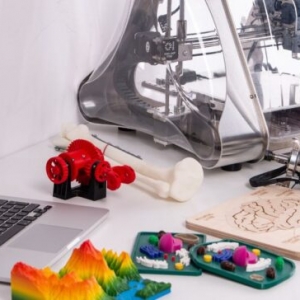Commercial 3D printing Services has emerged as a transformative force in the production and industrial sector, ushering in a new era of innovation and efficiency. This technology, rooted in the concept of additive manufacturing, has evolved significantly since its inception in the 1980s and is now a crucial component of contemporary manufacturing and production techniques.
The process of commercial 3D printing involves creating three-dimensional objects from a digital model through layering materials. Unlike traditional manufacturing methods such as milling, which involves removing material, 3D printing Services adds material layer by layer. The term “commercial” in this context denotes the use of 3D printing Services for commercial or industrial purposes, encompassing various applications:
Rapid Prototyping: Companies can swiftly transform design concepts into physical prototypes, facilitating faster design iterations and decision-making processes.
Custom Manufacturing: It enables the production of tailor-made or bespoke items without the need for expensive molds or tooling.
On-Demand Production: Companies can reduce the need for large inventories by producing items based on demand, optimizing storage and production costs.
Specialized Components: Industries such as aerospace, healthcare, and automotive benefit from 3D printing, producing parts with specific properties or intricate geometries that are challenging with traditional methods.
Supply Chain Simplification: Localized production of parts and products reduces dependencies on lengthy supply chains, streamlining logistics.
The game-changing aspects of commercial 3D printing Services lie in its ability to revolutionize prototyping, democratize customization, and introduce sustainability into manufacturing processes. It accelerates prototyping, allowing businesses to bring design concepts to tangible prototypes quickly, thus expediting the innovation and design decision-making cycle. Mass customization becomes feasible without significant additional costs, disrupting the conventional model tailored for mass production. Cost efficiency, supply chain revolution, waste reduction, and the ability to produce complex geometries are among the key advantages.
Key Advantages of Commercial 3D Printing Services:
Rapid Prototyping: Accelerates design and testing phases, reducing time-to-market.
Mass Customization: Enables the creation of bespoke products without high additional costs.
Cost Efficiency: Particularly beneficial for short-run productions compared to traditional methods.
Supply Chain Revolution: Allows localized production, reducing transport costs and lead times.
Waste Reduction: The additive process minimizes material waste compared to subtractive methods.
Complex Geometries: Facilitates the production of intricate structures impractical with traditional methods.
Sustainability: Offers a greener alternative with reduced waste and potential use of recycled materials.
Inventory Management: Reduces the need for storing large quantities of spare parts, saving on inventory costs.
Material Innovation: Drives innovation in material science for unique properties tailored to specific applications.
Empowering Small Businesses: Levels the playing field by providing accessibility to 3D printing technology for small businesses.
While 3D printing Services is commercially viable for various businesses, its feasibility depends on factors such as material costs, production efficiency, and technical constraints. Ideal for specialized markets and tailored production, it may not replace traditional techniques for large-scale manufacturing. The evolution of 3D printing from its inception in the 1980s to its current state showcases its remarkable journey as a cornerstone of the third industrial revolution. The continuous growth in applications and capabilities makes commercial 3D printing an integral part of the modern manufacturing landscape.





